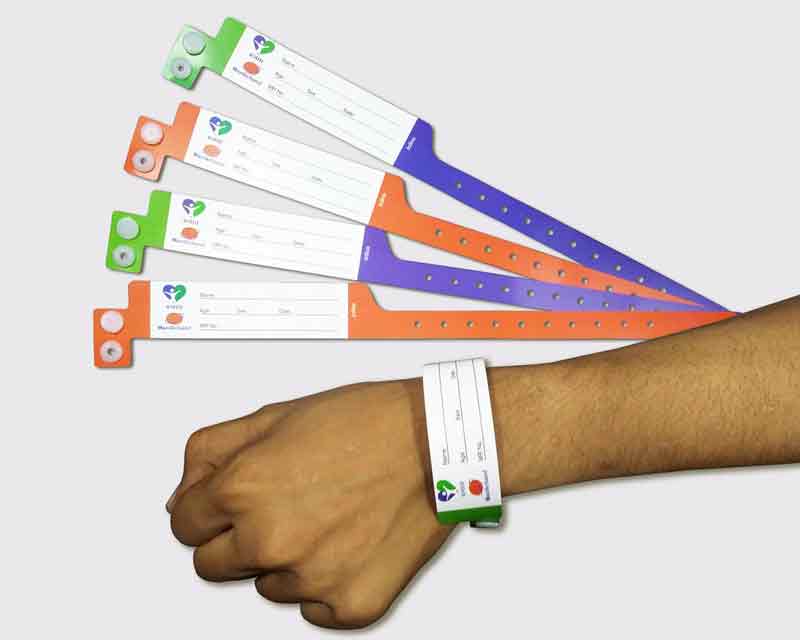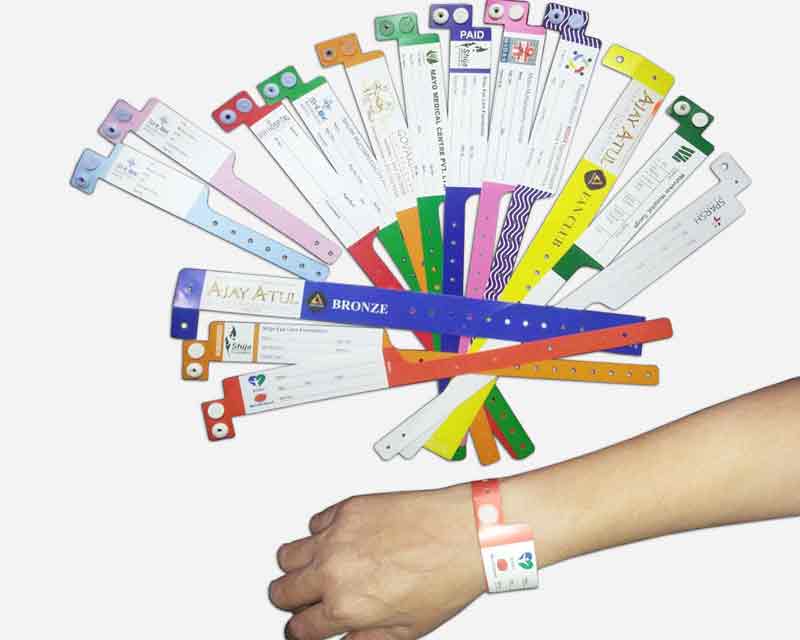Best Practices for Introducing a Patient Identification Band System in Your Clinic
Best Practices for Introducing a Patient Identification Band System in Your Clinic
Blog Article
Discovering the Numerous Sorts Of Patient Identification Band Used in Clinical Facilities
In the complex world of healthcare, the crucial duty of Patient Identification bands typically goes unnoticed. These bands, differing from easy paper wristbands to advanced RFID bands, create the backbone of Patient security methods, making sure precision in Patient Identification. Yet, the substantial diversity of these bands, each with its one-of-a-kind benefits and constraints, is commonly neglected. As we navigate via this topic, one might gain understanding into the subtle intricacies and crucial relevance of such bands in medical centers.
Understanding the Significance of Patient Identification Bands
While they may appear like plain devices, Patient Identification bands play an essential duty in clinical facilities. These bands serve as a crucial tool for validating Patient identity, avoiding medical mistakes connected to misidentification. Patient Identification bands also help in enhancing administrative tasks, making certain exact record-keeping and invoicing.
Traditional Paper Wristbands: Their Use and Limitations
Standard paper wristbands have been a staple in Patient Identification across numerous medical centers. While their usage prevails, they nurture specific limitations that might affect their performance in Patient management. This area will concentrate on the range of their application and the fundamental downsides linked with their use.
Paper Wristbands: Usage Scope
In the world of Patient Identification, paper wristbands have actually long held a vital role. These bands are commonly utilized in outpatient setups, where the Patient's keep is short-term. The wristbands contain necessary information such as the Patient's name, day of birth, and a special Identification number. This easy, yet reliable system, enables doctor to swiftly and accurately determine people, guaranteeing the proper treatment is provided. Paper wristbands are additionally used in emergency situation scenarios, where rapid Identification is extremely important. Their use prolongs to occasions like blood donation drives and mass vaccination programs, better emphasizing their flexibility. Regardless of advancements in innovation, the modest paper wristband remains a cost-efficient and reputable remedy for Patient Identification in various health care situations.
Limitations of Paper Wristbands
Regardless of their widespread usage, paper wristbands are not without their drawbacks. In enhancement, paper wristbands often do not have the technological abilities of more contemporary choices, such as barcoding or RFID chips, limiting their capability to merely presenting written info. Paper wristbands can cause discomfort or skin irritability to some patients, particularly when worn for prolonged durations.
Barcoded Wristbands: Developments in Patient Identification
While Patient Identification has actually long been an important facet of medical care, the arrival of barcoded wristbands signifies a significant leap forward. These bands leverage the simpleness of barcoding modern technology, permitting for Patient info to be swiftly scanned and accessed. They improve the speed and precision of Patient Identification, minimizing the danger of medical mistakes connected to misidentification.
Superhigh Frequency Identification (RFID) Bands: a Step Towards Futuristic Medical Care
The advancement of Patient Identification bands has brought concerning the appearance of Radio Regularity Identification (RFID) Bands (patient identification band). These innovative tools existing essential advantages for medical care centers, providing a more reliable and highly advanced ways of his comment is here Patient Identification. The application of RFID in healthcare is a significant action towards an extra advanced method to Patient administration and safety
Recognizing RFID Bands

RFID Bands: Secret Benefits
Embracing a future where modern technology and medical care combine, radio frequency Identification bands supply numerous crucial advantages. Primarily, these bands boost Patient security by providing exact, immediate Identification, thereby lowering clinical errors. RFID bands can save a huge amount of Patient data, including clinical history and allergic reactions, allowing personalized treatment. They likewise streamline management tasks, as the automated information entrance changes hands-on processes, enhancing efficiency and lowering documents. RFID bands supply real-time tracking of people, important in high-risk atmospheres such as surgical procedure or intensive treatment. Lastly, these bands are immune and durable to environmental variables, guaranteeing regular functionality. On the whole, RFID bands represent a considerable innovation in Patient Identification innovation, profiting both people and doctor.
Executing RFID in Healthcare
These bands offer a smooth way to track and recognize clients, guaranteeing their safety and boosting effectiveness in therapy procedures. RFID bands decrease clinical mistakes by offering exact Patient Identification, which is crucial in stopping misdiagnosis or wrong medication management. Thus, the application of RFID bands is a significant step in the direction of improving Patient safety and security and healthcare shipment.

Color-Coded Wristbands: Helping in Quick and Accurate Diagnosis
In the bustling atmosphere of a clinical facility, color-coded wristbands have arised as essential tools for swift and exact Identification of a patient's medical problem. These wristbands, put on by patients, bring certain shades that correspond to different medical problems or standings. This system is designed to provide instant aesthetic cues to health care suppliers, boosting Patient security and care top quality.
Methods for Efficient Implementation and Management of Patient ID Bands
Attaining optimal use Patient Identification bands necessitates a well-structured news method for their application and administration. The primary step entails training all wellness employees on the relevance of appropriately using and reviewing these bands. Second of all, health centers need to systematize using ID bands throughout all divisions, making sure harmony and minimizing inconsistencies. Normal audits needs to be performed to verify adherence to policies and to rectify any kind of incongruities. Patient education is additionally critical; individuals should understand the objective of the bands and the need for their consistent wear. patient identification band. Finally, it's vital to have a backup strategy in position, such as barcode scanning or biometrics, to ensure that Patient Identification is never jeopardized.
Verdict
Patient Identification bands are vital in clinical centers to ensure safety and accuracy. Efficient execution and management of these bands can considerably decrease clinical mistakes, enhance efficiency, and improve overall Patient care.
These bands, varying from easy paper wristbands to sophisticated RFID bands, develop the foundation of Patient security methods, making certain accuracy in Patient Identification.The advancement of Patient Identification bands has actually brought concerning the appearance of Radio Regularity Identification (RFID) Bands. Overall, RFID bands stand for a substantial advancement in Patient Identification innovation, benefiting both clients and health care carriers.
RFID bands reduce clinical mistakes by supplying precise Patient Identification, which is essential in preventing misdiagnosis or incorrect medicine management. Patient education and learning is also important; individuals need to understand the objective of the bands and the demand for their continuous wear.
Report this page